Posted on 28/03/2018 by David
Continuing our Legendary Castles of North Wales series, we turn our attention to Beaumaris Castle, on the Isle of Anglesey. Widely known as the most ‘technically perfect’ castle in the UK, the immaculate symmetry and grand walls here are an incredible sight.
Beaumaris was the last of King Edward I’s ‘Iron Ring’ castles to be built, though construction was never finished, as funds dwindled and the king’s attentions were pulled away from construction and towards rebellions and uprisings across Britain.
Despite its incompleteness, Beaumaris is undoubtedly one of the grandest of all the castles in Wales.
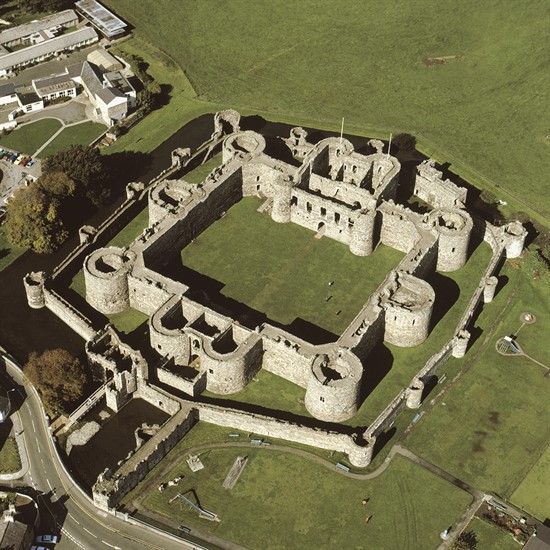
A Violent History
The story behind the construction of Beaumaris Castle is one of war and rebellion. Edward I had fought wars for control of Wales against Llywelyn ap Gruffudd in the late 1200s; after the first battle the English king seized land situated east of the River Conwy and ap Gruffudd and his army retreated to their stronghold in the highlands of Snowdonia.
Oppressive rule coupled with heavy-handed taxation on the Welsh population led to another uprising, again led by ap Gruffudd, who was killed at the Battle of Orewin Bridge in 1282. Much of the Welsh army’s resources and supplies came from Anglesey, which led Edward to plan a castle on the island to complete his occupation.
By 1294 the English king’s harsh rule led to another rebellion, this time led by Madog ap Llywelyn. The rebels stormed the then-unfinished Caernarfon Castle and burnt it, further convincing Edward a stronghold was needed on Anglesey.
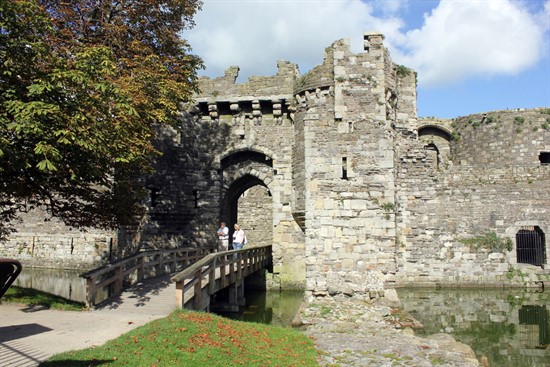
Building Beaumaris
Construction began in 1295, and the project was the most ambitious and complex ever undertaken by James of St George, the royal architect. The design behind the castle’s fortification was completely state-of-the-art in the 13th century.
Llanfaes was chosen as the site for the castle, and its population was evicted and (forcibly) moved to a new settlement, called Newborough, about 20 kilometres away.
The terrain here was marsh (hence the French name ‘Beau Marais’, or ‘fair marsh’), so the architect and builders didn’t face the same space constraints that had seen them alter the plans for castles in Conwy and Harlech.
Beaumaris was built with a completely concentric design, with a moat acting as the outermost defence; moat water came directly from the sea, which made enemy tampering more difficult. Curtain walls, towers and gatehouse keeps added to the castle’s robust structure.
The building of such a gigantic structure was expensive, and as the War of Scottish Independence began in 1296 the English army found their attention constantly dragged north. After the Scottish uprising was initially defeated, Edward looked to consolidate his control in Scotland as he had done with the ‘Iron Ring’ in Wales, though diminishing funds meant stone castles were impossible.
Thus, wooden timber castles were constructed in Scotland and work on Beaumaris slowed eventually to an almost complete halt in late 1296, leaving parts of the castle unfinished.
The early 1300s saw a renewed effort to complete Beaumaris Castle, which led to the finishing of the outermost curtain wall. Though construction continued, the castle was never entirely completed.
Beaumaris withstood an attack from the Scottish army and was still standing after Welsh leader Owain Glyndŵr took hold of the castle in 1403.
Glyndŵr’s siege led to further fortification work taking place in Beaumaris town, which had been founded along with the castle. A two-metre thick town wall was built that stood until 1669.
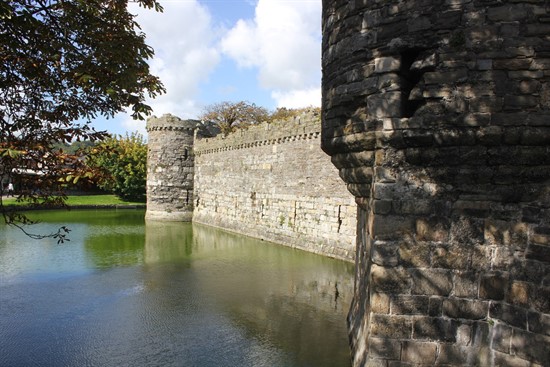
The perfect castle
Without a doubt, the castle is one of the finest pieces of architecture in the UK. From its near perfect symmetry to the defensive concentric walls, there’s so much to marvel at within Beaumaris’s design.
The sea-fed moat is not only an effective and self-sustaining defence, but also served as an efficient waste removal and transport system, allowing supplies to be brought right to the castle itself.
Beyond this first line of defence the castle benefits from four levels of wall fortification; the concentric ‘walls within walls’ design also allowed archers to shoot through concealed windows and soldiers to use ‘murder holes’ hidden within the structure to defend against enemy attacks.
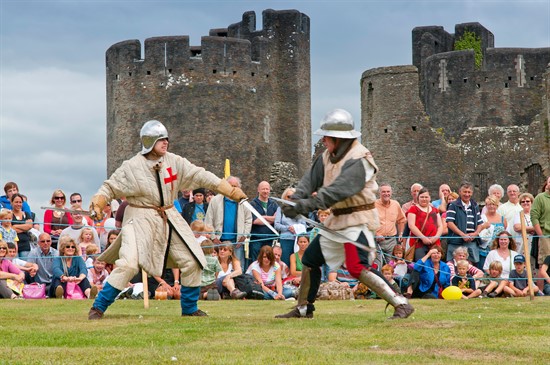
Beaumaris today
The superiority and ingenuity of its design is still apparent at Beaumaris today, though there are also plenty of opportunities to explore medieval history here.
Beaumaris’s Easter weekend festivities feature knights and living history exhibits to take part in and it’s pretty much impossible to wander the ancient walls and walkways without feeling transported back in time.
The site is maintained by Cadw, and has been a World Heritage site since 1986.
The castle is nestled amongst stunning Anglesey countryside, and visitors can enjoy spectacular sea and mountain views from the ramparts.
Visit the chapel to admire the beautiful stained glass and watch the informative film played in one of the towers to learn even more about this endlessly fascinating place.
The town itself is also home to Beaumaris Gaol, where even more historical exploration can take place.
All that adventure makes for an empty stomach, so don’t leave Beaumaris without stopping by local favourite W.T. Roberts Central Bakery or grabbing a sweet treat at the Red Boat ice cream parlour!
So, where to next? We're going to let you choose! Head over to our Facebook page and cast your vote...
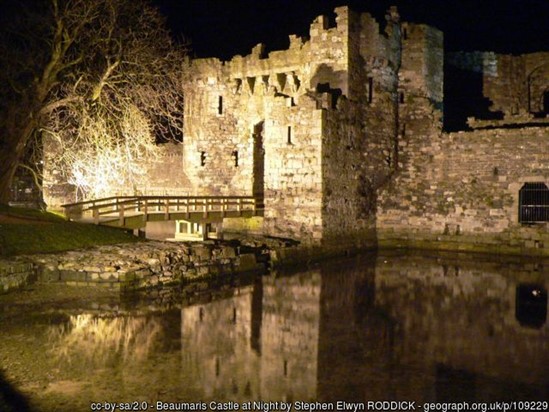
Images courtesy: Beaumaris walls and moat, and the Sea Gate by © Copyright Jeff Buck and licensed for reuse under the Creative Commons Licence. Beaumaris by night © Copyright Stephen Elwyn RODDICK and licensed for reuse under the Creative Commons Licence.

